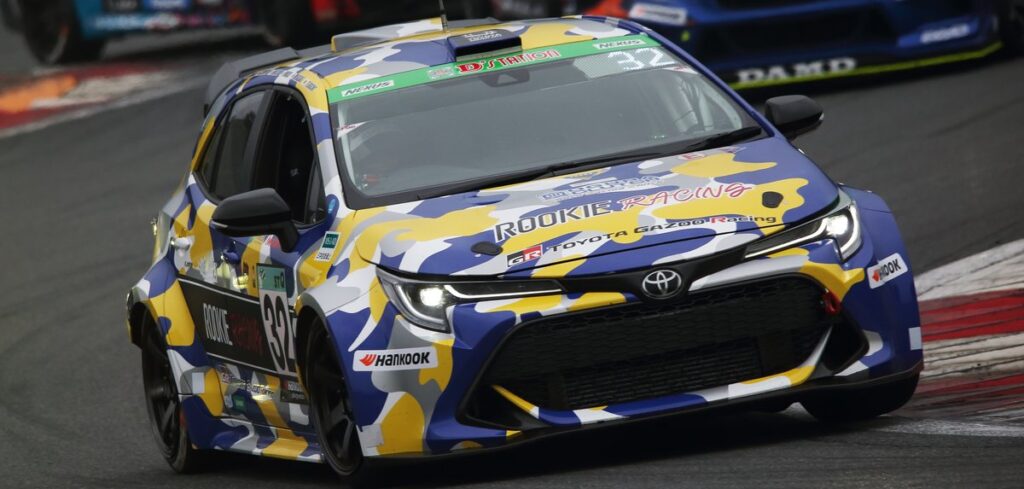Five Japanese automotive manufacturers – Kawasaki, Subaru, Toyota, Mazda and Yamaha – are to jointly try and address the challenge of expanding sustainable fuel through racing programs.
Specifically, to further improve the available options for producing, transporting and using fuel, the five companies intend to unite and pursue three initiatives: participating in races using carbon-neutral fuels, exploring the use of hydrogen engines in two-wheeled and other vehicles, and continuing an existing racing program using hydrogen engines.
Starting with the use of carbon-neutral fuels, Mazda will develop its Spirit Racing Bio concept Demio vehicle, which recently competed in the Super Taikyu Race in Okayama, Japan, and is powered by a 1.5-liter Skyactiv-D engine running on biomass-derived fuel. Mazda says it will use racing to ensure the reliability of the technology. Toyota and Subaru, meanwhile, plan to run two synthetic-fueled vehicles in next year’s Super Taikyu series, Subaru a BRZ and Toyota a GR86, which share the same base platform.
For its part, Kawasaki is planning to continue its research into hydrogen as a next-generation energy source. The company is currently conducting verification tests for transporting to Japan large-quantity, low-cost hydrogen produced from Australian lignite. By the end of FY 2021, it plans to transport hydrogen using its in-house-constructed, first-in-the-world, purpose-built liquefied hydrogen carrier, the Suiso Frontier.
Yamaha is developing hydrogen engine technology for possible use in its two-wheel vehicles, ROV (four-wheel recreational off-highway vehicle) series, and other products. Kawasaki and Yamaha are also considering the joint development of a hydrogen engine for possible use in two-wheel vehicles. Going forward, they hope to be joined by Honda, with a clear framework to determine areas of collaboration and cooperative research.
Toyota has already been working on the development of hydrogen IC engine technology over the last three races of the Super Taikyu Series. Since its engine’s first race, which was the Fuji Super TEC 24 Hours, Toyota says improvements have been made to it after each event.
In the six months leading up to the Super Taikyu Race in Okayama last weekend, the engine’s output has been improved by about 20% and torque by about 30%; in the two months since its last race, its output and torque have been improved by 5-10%, giving it performance superior to that of a similarly sized gasoline engine. Fuel economy has been kept the same. (If output were to be set the same as that at the time of the Fuji Super TEC 24-hour race, fuel economy would improve by about 20%.)



